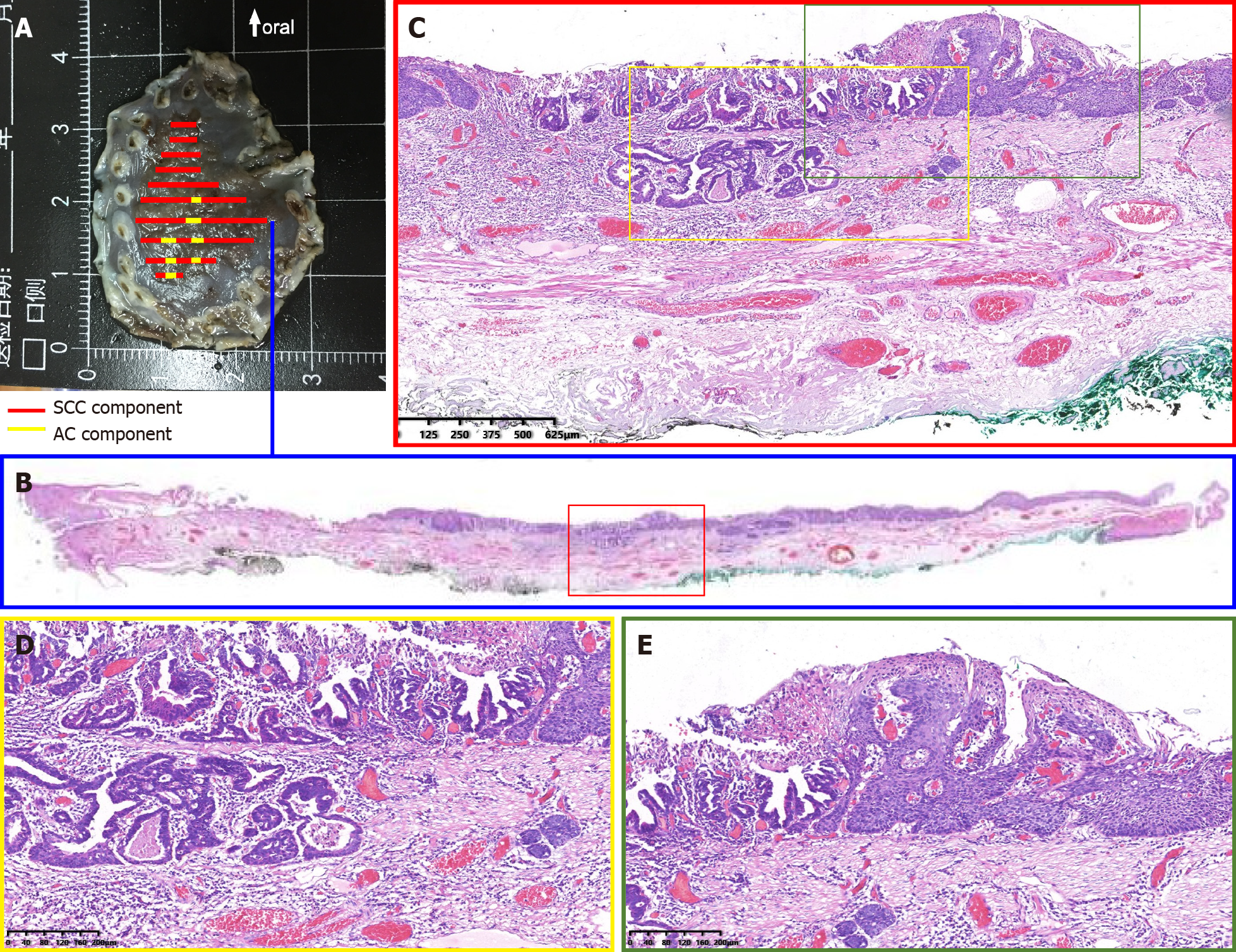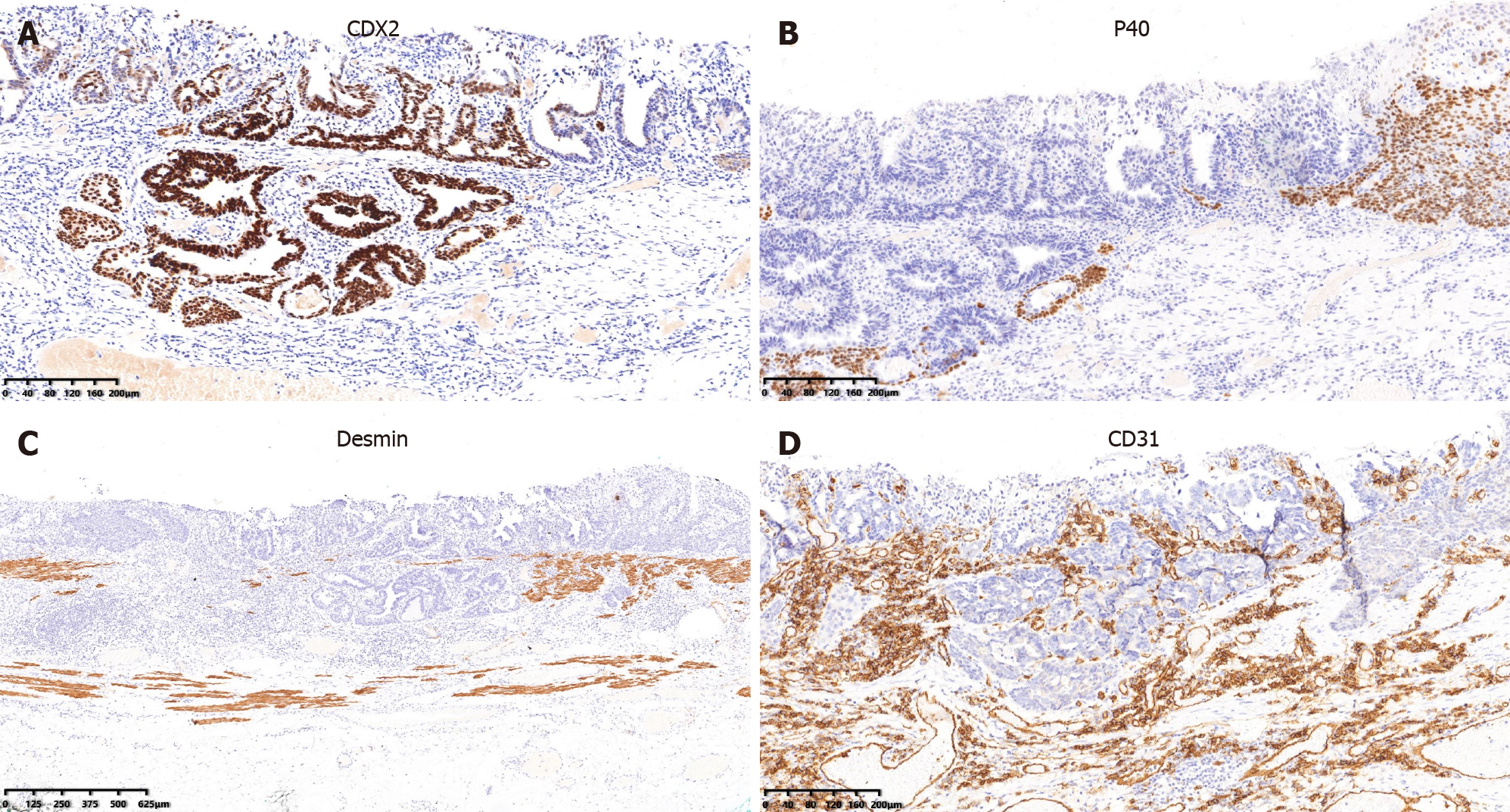Copyright
©The Author(s) 2021.
World J Clin Cases. Feb 26, 2021; 9(6): 1336-1342
Published online Feb 26, 2021. doi: 10.12998/wjcc.v9.i6.1336
Published online Feb 26, 2021. doi: 10.12998/wjcc.v9.i6.1336
Figure 1 Esophagogastroduodenoscopy revealing a superficial lesion in the distal esophagus.
A: Upon white light endoscopy, a flat lesion of approximately 2.5 cm × 1.5 cm in size was found, with the central part uneven and slightly elevated. The lesion presented slight reddening of the mucosa with a coarse surface; B: Narrow-band imaging showed a well-demarcated brownish area of background coloration; C and D: Iodine staining (1%) visualized the lesion as an unstained area with a comparatively clear boundary, and pink color sign could be seen.
Figure 2 The lesion upon narrow-band imaging.
A: The lesion upon narrow-band imaging; B: Magnified view with magnifying endoscopy with narrow-band imaging of the yellow square in (A) revealing that under the membranous substance and mucous there were intrapapillary capillary loops with morphological irregularity, classified as type B1; C: Magnified view with magnifying endoscopy with narrow-band imaging of the blue square in (A), revealing that in the slightly elevated central part of lesion, irregularly and dendritically branched abnormal vessels without loop formation were observed, classified as type B2; D: Endoscopic ultrasonography revealing a hypoechoic mass (white arrows) confined to the mucosa layer, which did not seem to disrupt the muscularis mucosa completely, and the submucosa layer was intact.
Figure 3 Dilated and tortuous vessels were observed around and within the ductal-structure-forming cancer cell nests.
A: Specimen resected by endoscopic submucosal dissection; B: Histological view of the resected lesion revealed that the squamous cell carcinoma element was the predominant element, and the adenocarcinoma element was distributed in a focal pattern among the squamous cell carcinoma element; C-E: High-power view revealed invasive carcinoma forming ductal structures distributed among squamous cell carcinoma. Part of the lesion was covered by dyskeratotic squamous cells.
Figure 4 Immunohistological findings of the lesion.
A and B: The ductal structures were positive for CDX2 and negative for P40; C: The muscularis mucosa was positive for desmin, confirming that the deepest part of the carcinoma was limited within the muscularis mucosa; D: CD31 staining revealed the distribution of vessels, showing dilated and tortuous vessels around and within the ductal-structure-forming cancer cell nests.
- Citation: Liu GY, Zhang JX, Rong L, Nian WD, Nian BX, Tian Y. Esophageal superficial adenosquamous carcinoma resected by endoscopic submucosal dissection: A rare case report. World J Clin Cases 2021; 9(6): 1336-1342
- URL: https://www.wjgnet.com/2307-8960/full/v9/i6/1336.htm
- DOI: https://dx.doi.org/10.12998/wjcc.v9.i6.1336












